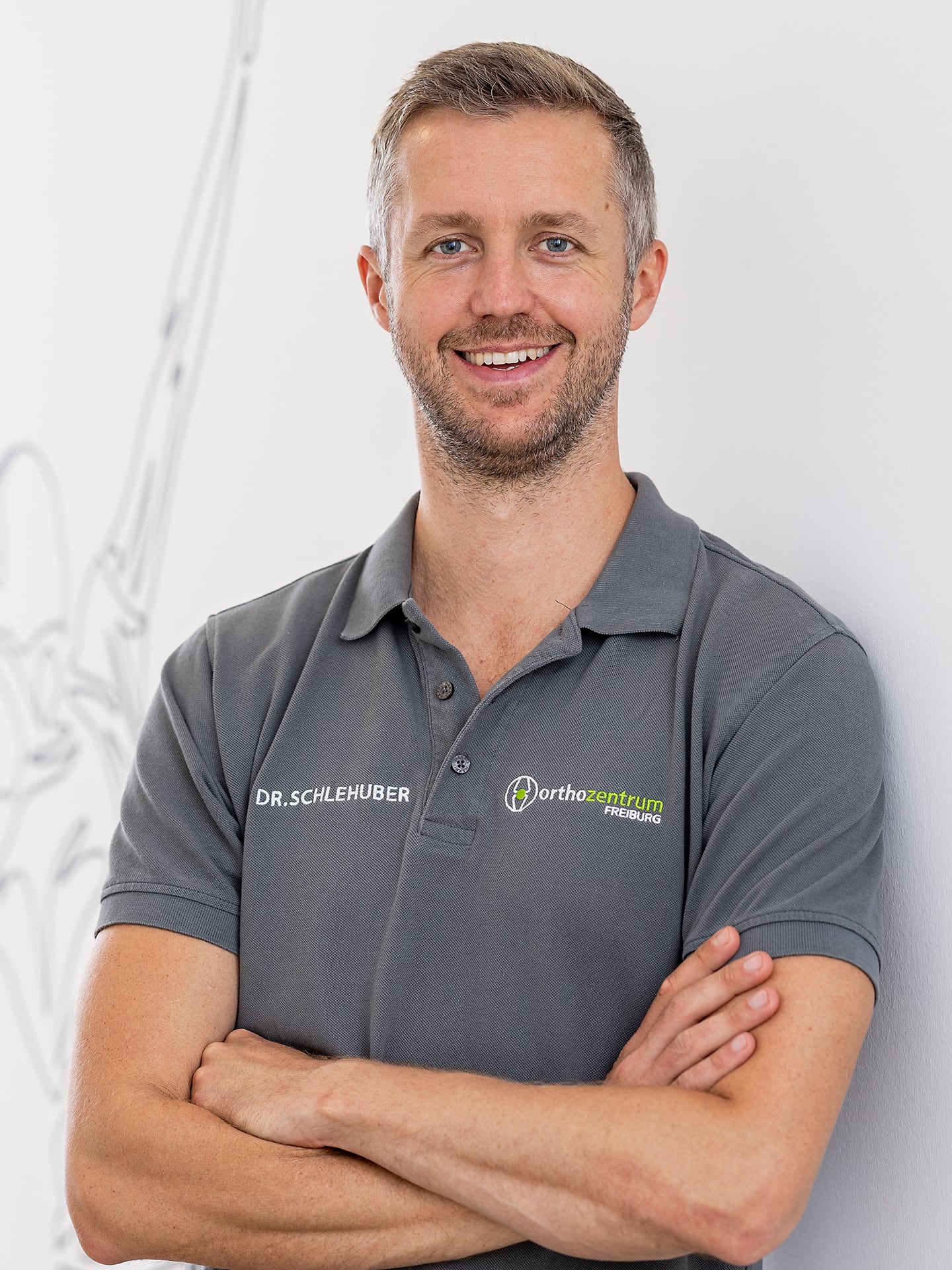Anatomy & Function
Achillodynia is an umbrella term for conditions characterized by discomfort at the back of the heel, in the area of the Achilles tendon. The Achilles tendon is the strongest tendon of the human body. It is the common tendon of the calf muscles, which attaches to the heel bone and is responsible for the flexion of the foot, i.e. in particular for the push-off movement when running. This is why this clinical picture is particularly widespread in running .
Symptoms & Complaints
Signs of achillodynia may include:
- Load-dependent pain on the back of the heel
- Limited mobility
- Redness, hyperthermia, swelling in the area of the Achilles tendon
- Pressure pain
Typically, in the early stages, pain occurs primarily in the area of the Achilles tendon during exertion. In far advanced cases, however, pain at rest and at night are also possible. In addition, mobility may be restricted, i.e. movements that are normally mediated by the Achilles tendon, such as the tiptoe stance, are only possible with difficulty.
In addition to pain and restricted movement, local redness and swelling may also occur. In some cases, the area around the Achilles tendon is painful from pressure and the Achilles tendon itself is thickened.
Causes
Causes of achillodynia include:
- Overload and/or incorrect load
- Bursitis
- Heel spur
- Haglund heel
In the vast majority of cases, overloading of the Achilles tendon is the cause, as this leads to the formation of small tears in the tendon and subsequently to an inflammatory reaction. Overloading can be caused, for example, by intensive running, being overweight or wearing the wrong shoes. Insufficient warm-up before training, too rapid an increase in load or a lack of stretching can also lead to increased stress on the Achilles tendon.
In some cases, the symptoms can be attributed to other causes:
Between the Achilles tendon and the heel bone lies a bursa, which is supposed to prevent friction between bone and muscle and thus acts as a shock absorber. If this bursa is inflamed, this can also lead to pain around the Achilles tendon.
In addition, ossification of the tendon insertion of the Achilles tendon, known as an upper heel spur, can cause pain in this area.
Another cause of overuse of the Achilles tendon can be a Haglund 's heel, in which the back of the heel bone is more pointedly shaped than normal and, as a result, leads to mechanical constriction of the Achilles tendon.
Diagnosis
Our orthopedists at Orthozentrum Freiburg will ask you about your complaints in a detailed consultation . The type, duration and intensity of your current sporting activities are also important. Afterwards, a thorough physical examination will be performed, including palpation of the Achilles tendon and its surroundings. Protracted courses of the disease can lead to a noticeably thickened Achilles tendon.
If neither the medical history nor the physical examination provide indications of a specific cause of the complaints, imaging procedures such as an ultrasound or an MRI examination may be used.
Treatment
The treatment measures depend on the severity, the duration of the symptoms and the subjective suffering of the affected person.
Conservative therapy:
The following conservative therapies are available:
- Relief
- Heel cushion
- Painkiller
- Cooling pads
- Physiotherapy: Strength and stretching exercises
- In exceptional cases: Shock wave therapy, autologous blood treatment, surgery
Probably the most important therapeutic measure for Achillodynia is the temporary relief of the Achilles tendon. Running training should definitely be paused. After the symptoms have subsided, training can be gradually resumed. It is essential to ensure sufficient warm-up before training and thorough stretching after training. The use of a heel cushion or a heel elevation of the heel also serves the purpose of relieving the strain.
In cases of severe pain, painkillers from the group of non-steroidal anti-inflammatory drugs (NSAIDs), which help both to relieve pain and to reduce inflammation, can be used. However, this is a short-term solution at best. Additionally, applying cooling pads to the affected area can be helpful. Care should be taken to wrap the cooling pad with a kitchen towel and never place it directly on the skin.
Furthermore, physiotherapeutic exercise can help relieve the pain:
- Stretching and strengthening the calf muscles: For this exercise, stand barefoot with both legs on a stair step. It's best to hold on to the banister. Place the forefoot of one leg on the edge of the step so that the heel is free in the air. You should now feel a stretch in your calf muscles. Hold the position for 30-60 seconds. To further strengthen this muscle group, you can press up from the position into toe stand a few times. Please always perform the exercises on both sides.
Sollten die hier genannten Therapieverfahren nicht zu einer dauerhaften Linderung beitragen, so kommen v.a. bei chronische Verläufen die Infiltrationstherapie (Neuraltherapie, Eigenbluttherapie) oder die Stoßwellentherapie zum Einsatz. Auch diese therapeutischen Ansätze werden im Orthozentrum Freiburg angeboten und führen sowohl bei Leistungs- als auch bei ambitionierten Hobbysportlern und -sportlerinnen häufig zum Erfolg.
FAQs

